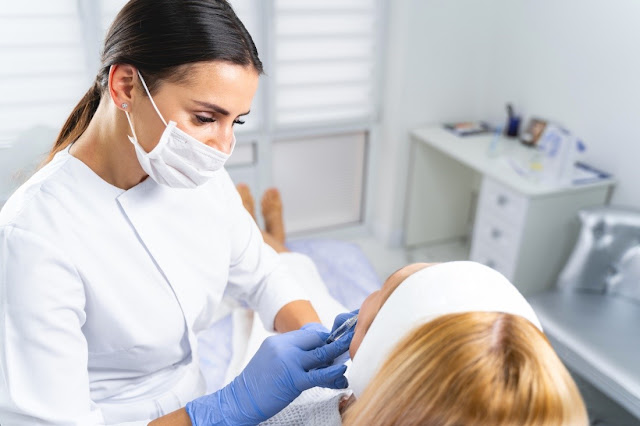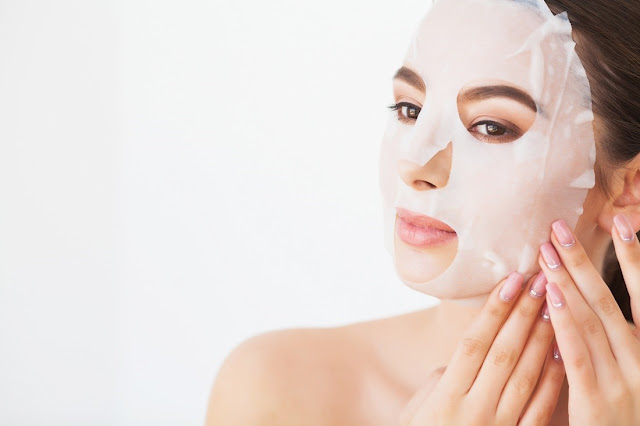What is Fungal Acne? What are its Causes?
What you assume is acne might not always be. Fungal acne is one such pretender, and it is a particularly cunning one. Have you ever had what seems to be face acne that does not react to standard acne treatments? Pittosporum folliculitis, otherwise known as fungal acne, might be the cause of this. This disorder is frequently confused with acne - or acne vulgaris; however, it is caused by a yeast called Malassezia furfur, which is normally present on the skin. Fungal acne can appear concurrently with acne, be misdiagnosed as acne, or flare-up as a result of acne therapy.
Because it is caused by a yeast infection in the hair follicles, it is resistant to standard acne treatment and necessitates a different approach. However, fungal acne and acne vulgaris are two distinct disorders triggered by two different factors. They will not react in the same way. If you continue to use anti-acne treatments, you may aggravate your fungal acne. That is why it is crucial to analyze what fungal acne looks like and how it grows.
What Is Fungal Acne?
For the record, having this form of fungus on your skin is quite normal. When it becomes uncontrollable, though, it can cause outbreaks or other skin diseases such as seborrheic dermatitis. Under normal circumstances, the bacteria and fungi on our skin will be in equilibrium. However, if the bacteria are destroyed, there will be nothing to hold the fungus at bay. As a result, the fungus can overgrow, causing skin irritation, inflammation, and fungal acne. With heat, humidity, and sweat, fungal acne tends to flare up in the summer months. It can also occur as a side effect of medication such as antibiotics and steroids/prednisone, as well as in association with other systemic disorders such as diabetes.
Many acne treatments are antibacterial, which kills normal skin bacteria and creates an ideal environment for yeast to thrive and fungal acne to flare. These breakouts are often tiny, homogeneous red lumps that originate from hair follicles and appear in symmetric rows on the forehead, cheeks, and, on rare occasions, the upper back, and upper chest. Fungal acne is distinct from typical acne in that it lacks blackheads, pustules, and deeper, painful nodules and cysts.
Conditions That Aggravate This Acne:
The yeast that causes fungal acne is constantly present on your skin. Generally, your body is capable of balancing the yeast, fungus, and bacteria that are also present on your skin. Overgrowth can occur if the natural equilibrium is disturbed. This is when the hair follicles become infected and acne-like symptoms appear. Several situations or events can disrupt this bacterial-fungi equilibrium, including:
• Medication: Antibiotics minimize the microorganisms on your skin. This can allow the fungus to develop.
• Moisture: Wearing sweaty gym clothing over an extended period of time might promote yeast development. Reusing workout clothing without washing them exposes your skin to the fungus that has formed in the garments.
• Diet Changes: Fungi and yeast depend on carbs, thus balancing your sugar and carbohydrate diet may help fungal development.
• Compromised Immunity: People with weakened immune systems may be more prone to fungal acne.
• Moist Environment: People who live in warmer regions, where sweating is more prevalent, may be more prone to fungal acne.
• Tight Clothes: Wearing non breathable clothing on a regular basis might lead to an increase in perspiration and moisture. This can create a skin condition conducive to yeast development.
Common Symptoms:
Itchiness is the most common symptom you'll experience. Fungal acne can be chronic, worsen with perspiration, and flare up in hot, humid weather. This illness can be diagnosed by your dermatologist based on its appearance, clinical symptoms, and the lack of improvement with standard acne medicines. If necessary, a skin scrape for yeast can be obtained and studied to confirm the diagnosis.
One of the reasons fungal acne can continue so long is that it resembles acne vulgaris or bacterial acne in appearance. People who don't know the difference between fungal and bacterial acne may treat it with standard acne skincare products. These therapies are ineffective and might aggravate the condition. Here's how to identify fungal acne from bacterial acne:
• Location: Fungal acne frequently appears on the arms, chest, and back. It can also occur on the face, which is the most common site of bacterial acne.
• Clusters: Fungal acne frequently manifests as clusters of tiny whiteheads.
• Size: Fungal acne causes pus-filled pimples that are usually all the same size.
• Itching: Itching is a common symptom of fungal acne.
Because fungal acne is caused by yeast development, you may also have other yeast-related illnesses such as psoriasis and dandruff. This might help you decide whether your outbreaks are caused by yeast or something else.
How Is It Diagnosed?
A dermatologist will question you about your symptoms in order to identify types of acne. This will almost certainly include:
• How long have you had the breakout?
• What methods have you taken to cure it?
• What symptoms are you having?
In some circumstances, the dermatologist may additionally:
• Do a quick, painless skin scraping and analyze the scrape under a microscope to check for the yeast that causes fungal acne.
• Obtain a skin sample or do a biopsy. This is a straightforward procedure carried out in the office. The sample will be submitted to a lab to be examined in order to confirm the diagnosis of fungal acne.
Fungal Acne Treatment and Preventions:
Remember that because this condition is caused by yeast, standard antibacterial and anti-inflammatory acne therapies will not work. For treatments, antifungal and anti-yeast therapies are required. For moderate conditions, you might begin by using a topical antifungal cream or lotion to the afflicted regions on a regular basis. In the case of a more severe or chronic outbreak, your dermatologist may prescribe an oral antifungal drug. Maintenance therapy may also be required since this condition might reoccur, particularly when the environment is favorable for yeast growth.
Because it resembles typical acne, fungal acne is frequently misdiagnosed. Many individuals employ over-the-counter anti-acne treatments to combat it, but they are ineffective. To effectively cure the fungal infection, you must restore the skin's equilibrium of yeast and bacteria. Several therapeutic methods are available to aid with this, some of which are:
Loose Clothes: When you wear tight garments all the time, the friction and lack of ventilation might promote yeast development on your skin. Choose loose, breathable materials on a frequent basis to promote appropriate circulation and balanced bacterial and fungal development. Breathable materials allow for ventilation, which can help to reduce warm, damp conditions that promote fungal development. Consider wearing comparable sorts of clothing if altering your wardrobe, as alternatives help alleviate fungal acne.
Anti-Dandruff Shampoos as Body Wash: Dandruff shampoos containing pyrithione zinc or selenium sulfide can be used as body washes. This is an off-label application for these shampoos, yet it can be beneficial. While you're experiencing a breakout, use these dandruff shampoos to rinse your skin many times each week. You should also use it on a regular basis, around once a week, to help maintain a healthy balance of yeast and bacteria on your skin. This daily rinse may aid in the maintenance of a healthy yeast balance on your skin. Once the breakout has cleared up, you may reduce your usage of the shampoo as a body washes to once a week. Allow the shampoo to rest on your skin for several minutes before washing for optimal benefits. After a workout or a sweaty day at work, a brief rinse can help prevent yeast development.
Anti-Fungal Treatment: There are several over-the-counter antifungal creams and ointments available, including treatments for athlete's foot and jock itch. Look for creams containing ketoconazole, butenafine, or clotrimazole.
Oral Medicine: If home therapies do not help to clear up the outbreak, consult with your dermatologist. To target the hair follicles and remove the infection, your dermatologist may prescribe an oral medicine such as itraconazole or fluconazole.
Balanced Diet: Fungi, like yeast, thrive on sugary carbs, so eat a variety of fruits, vegetables, and proteins to help prevent overgrowth.
How Long Does it Take to Go Away?
It's difficult to predict how long fungal acne will remain, as it is with any other troubling skin condition (including ordinary bacterial acne). If left untreated, the length of time it takes for fungal acne to clear depends on the person. If it is caused by seasonal changes or stressful life events, it may take from weeks to months to improve. However, the appropriate therapy can significantly reduce recovery time. When you use antifungal washes or creams to treat the problem, you should see results in two to four weeks.
Final thoughts:
Fungal acne is an infection of the hair follicles caused by yeast proliferation. Despite its name, it is not the same as acne, which generates whiteheads and blackheads. Typical anti-acne therapies will not help with fungal acne. Instead, in order to correctly treat this form of infection, you must precisely diagnose it. Learning how to recognize this sort of skin illness might also help you avoid future outbreaks.
Read Also:
Everything You Need to Know About This Powerful Skin Resurfacing Treatment
Why and Which are most popular non-invasive facial treatments in 2022





Comments
Post a Comment